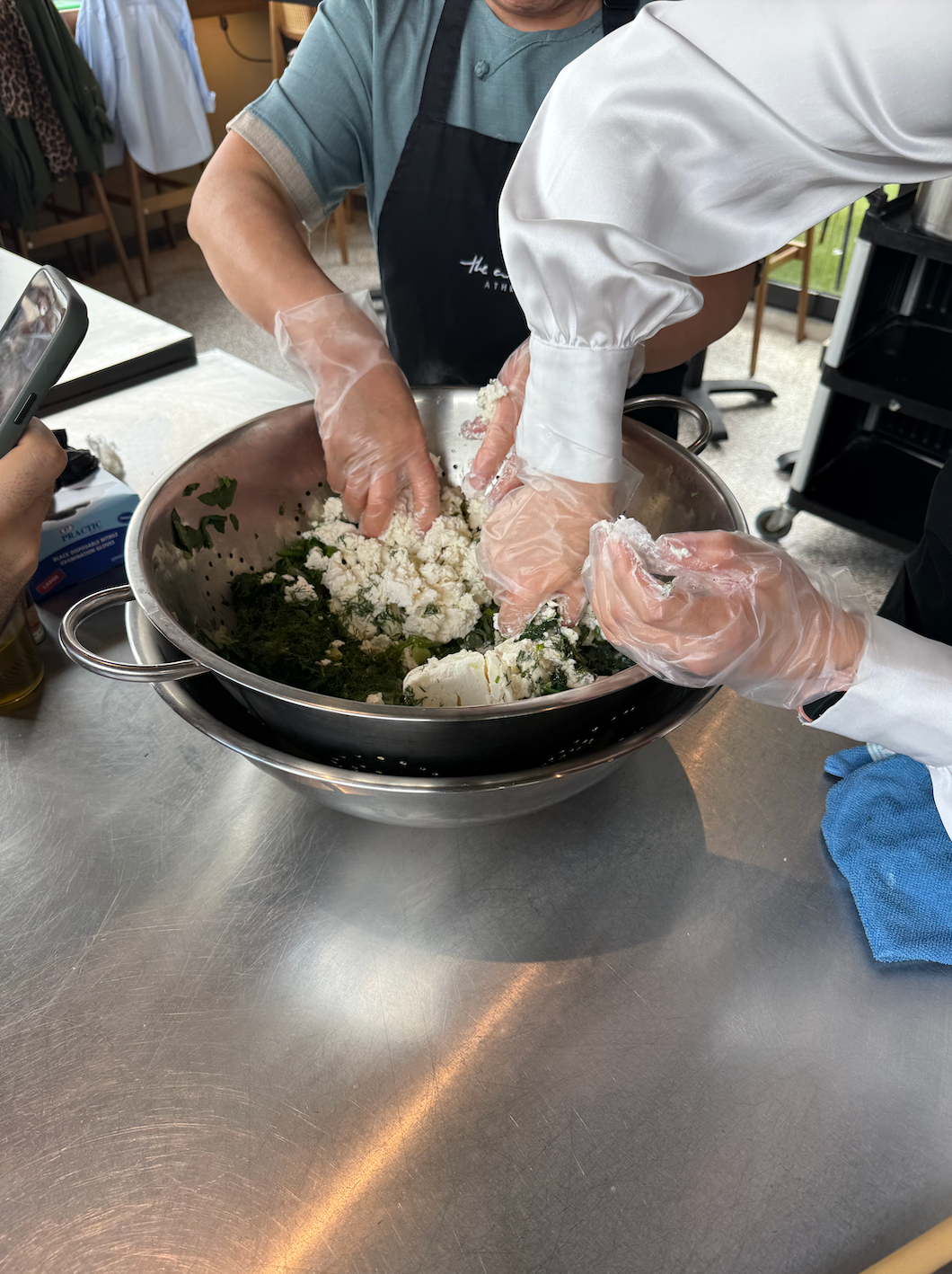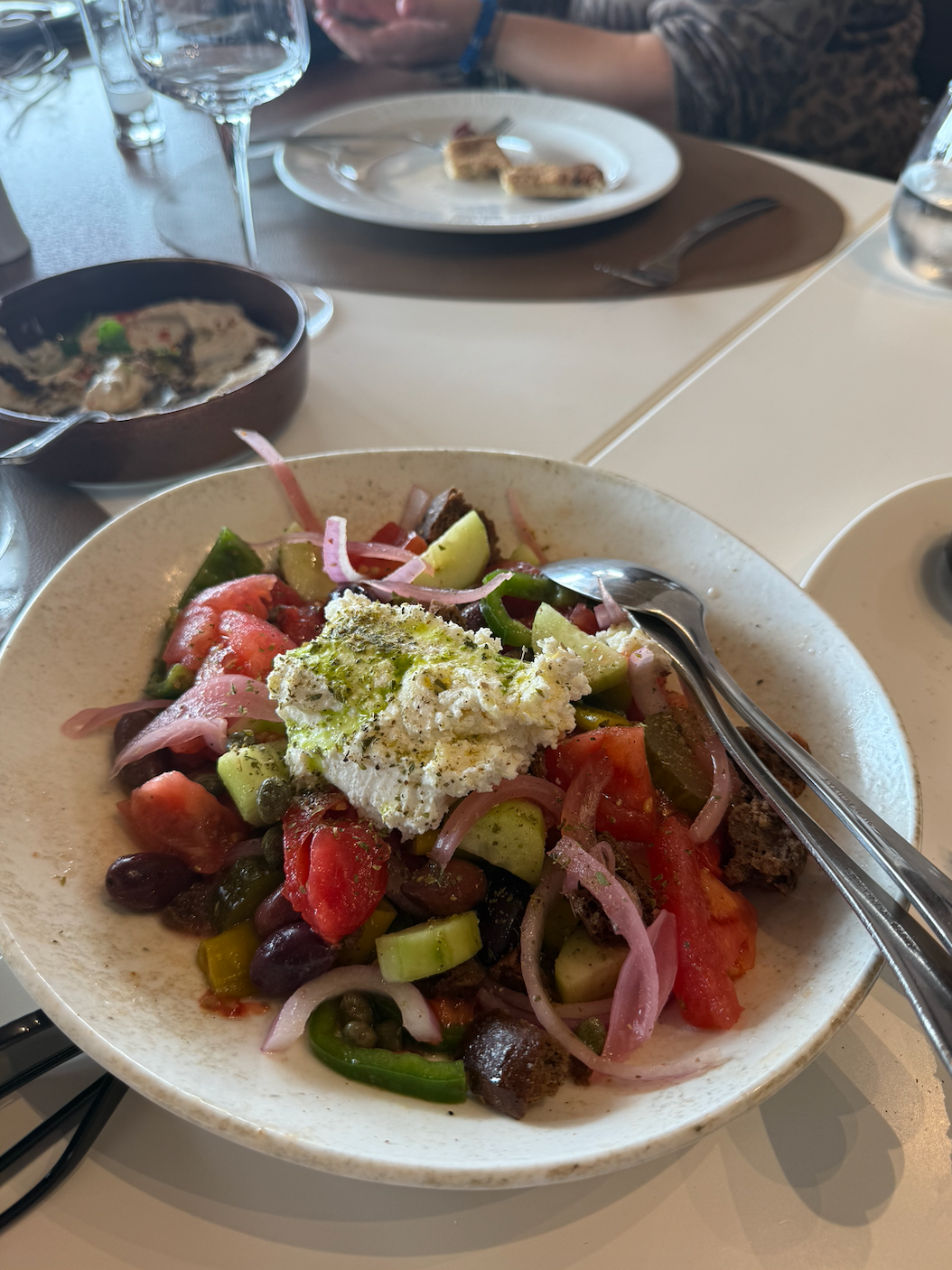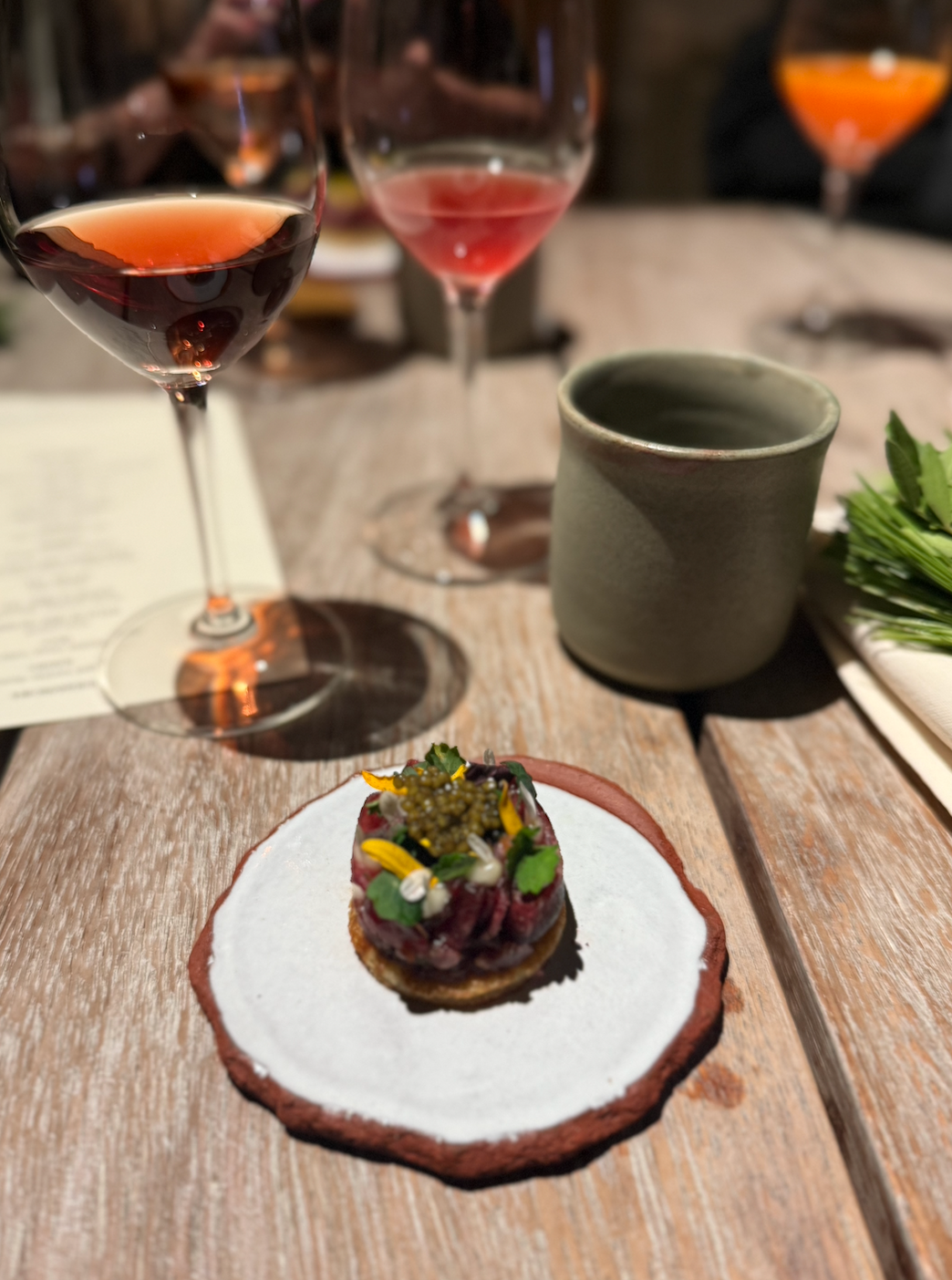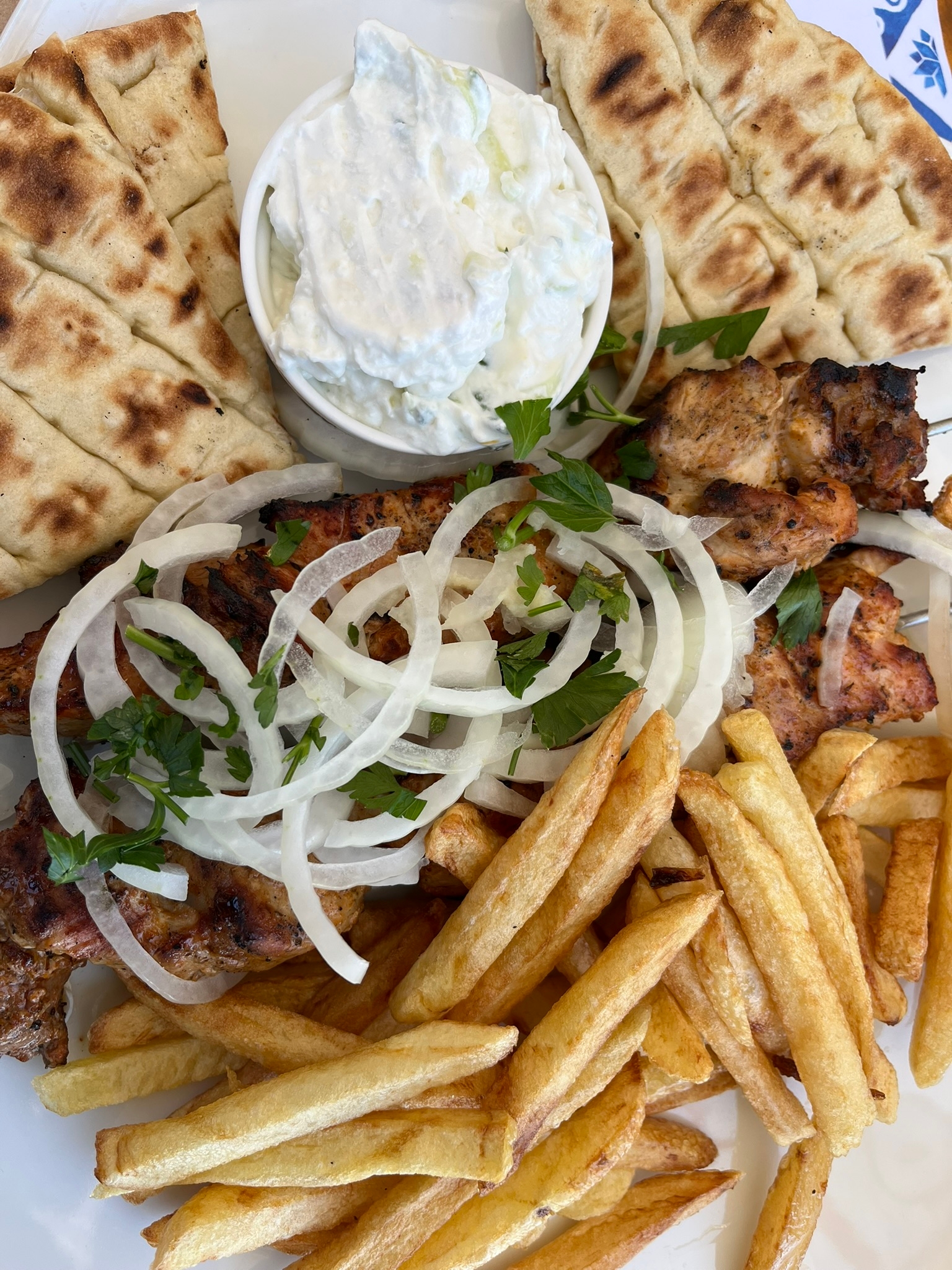After A Trip To Greece, I Finally Realized Just How Misinformed I Was About These 5 Common Elements Of Authentic Greek Cuisine
When purchasing feta at the grocery store, always look out for this...
I recently traveled to Greece for the first time, and it completely changed the way I think about its cuisine. Before this trip, my idea of Greek food was pretty basic: gyros, fries, grilled meats, and salads — and I was unaware of anything beyond those foods. When I thought of Greece, all I could picture was the famous Mamma Mia! movie adaptation, shot on the islands of Skopelos and Skiathos. But visiting Athens with CookUnity gave me the chance to experience authentic flavors firsthand. Spoiler: Everything I thought I knew about Greek cuisine was basically wrong.
Here is how it went. I joined a culinary journey through Greece, exploring everything from hidden mom-and-pop spots to higher-end restaurants alongside CookUnity contest winners. If you are unfamiliar, CookUnity delivers fully cooked, ready-to-eat meals that only need to be heated, which differs from traditional meal kits. We were even joined by celebrity chefs Cat Cora and John Delucie, which took the entire culinary experience to the next level.

As someone who thought they’d already had authentic Greek food in the U.S., I realized there are several common misconceptions about what authentic Greek cuisine actually entails. I might step on a few toes with this one, but here are a few things to keep in mind if you want to experience a truly authentic Greek dish.
1. Don't buy feta cheese pre-crumbled.

I know, I know — but stick with me here. One of the many activities we did was a cooking class at the Artist Athens. We learned fun facts about Greek dishes, and one of the most surprising things our instructor shared was that feta cheese should not be pre-crumbled. It actually holds its own shape and should be cut and portioned if desired.
When we made a traditional Greek spinach pie with feta, we ended up crumbling it ourselves to mix with the cooked spinach, and the process of breaking it apart was pretty satisfying. I don’t think I’ll be purchasing crumbled feta again. Just when I thought I had recovered from the feta revelation, I learned something else about my beloved Greek salad…
2. Greek salad and lettuce do not mix.

Here’s the thing: I love salads; all kinds, all types, and I certainly love Greek salads. I thought I had nailed the perfect Greek salad…until that revelation quickly faded when I learned that Greek salads aren’t supposed to use lettuce. It’s actually frowned upon! Learning that a true Greek salad is made with just a few simple ingredients, such as ripe tomatoes, cucumber, red onion, olives, olive oil, salt, and black pepper, completely changed how I see it. It is simple, fresh, and full of flavor. So say goodbye to lettuce, because it is really not needed.

3. Olive oil quality is way more important than you realize.

This one made me laugh, because I’ve definitely been guilty of buying olive oil in plastic bottles. However, as I learned, the best kind to buy is extra-virgin olive oil. It’s made by cold pressing olives without heat or chemicals, which helps preserve all the natural flavors and nutrients. A good olive oil should have a rich, golden-green color and come in a tin or glass bottle. During our food tour, we took a shot of olive oil at Zarkadian Athens; it was incredibly smooth with a peppery finish. It paired perfectly with the dried salami, cheese, and garlicky, crusty bread. I also learned that Crete, one of Greece’s major producers of olive oil, is known for its especially high-quality and flavorful varieties, which explains why it tastes so good fresh.
4. Greek food and fine dining do mix — and they mesh together beautifully.

During our trip, chef Cat Cora said, “Most people don’t think of Michelin star quality food when it comes to Greek cuisine.” On our first night in Athens, we dined at Soil, and that meal completely changed my perspective. Compared to my previous misconceptions about Greek food, Soil offered something entirely different. The name itself represents purity, connection to the earth, and a love for nature, and you could taste that intention in every dish.
Housed in a beautiful neoclassical home in Pangrati, in the heart of Athens, the restaurant redefines what Greek fine dining can be. Each course celebrated fresh, local ingredients in the most imaginative ways. One of the standout dishes was the oyster topped with Ossetra caviar, fermented cucumber, and small pieces of a yarrow plant. It was oceanic and briny with a delicate pop of salt that lingered on the tongue. Then came the 72-day dry-aged beef, served with cherry plum, damson, and more Osetra caviar, resting on a tender pancake. The flavors were rich, bold, and beautifully balanced, with hints of sweetness and deep savory notes that melted together perfectly.
By the end of the night, I realized Greek cuisine isn’t just about tradition. It is about transformation. Soil didn’t just serve food; it told a story, one delicious bite at a time.
5. And finally, despite what you may think: There’s no lemon or dill in authentic tzatziki.

This one surprised me the most. Every time I have made or ordered tzatziki in the U.S., it has had lemon juice and dill. It turns out those ingredients don’t belong in traditional Greek tzatziki at all. The authentic version is made with full-fat Greek yogurt, shredded cucumber, salt, olive oil, white wine vinegar for that tang, garlic, and black pepper. Mix it all together, and it is creamy, refreshing, and absolutely delicious. You can use it as a spread or as an easy sauce to drizzle on your favorite Greek dishes.
Overall, my experience with CookUnity in Athens was nothing short of amazing. I learned so much, ate incredible food, and got to debunk a few misconceptions about Greek cuisine along the way. Greece taught me that authentic food doesn’t need to be complicated…it just needs to be real. Now, every time I make a salad or grab a package of feta, I’ll think back to the flavors, colors, and generosity of Greek cooking. Greece definitely left its mark on me — and my taste buds. In the end, I still had to get my gyro and fries to complete the trip. I couldn’t leave Greece without trying them there, and I was thoroughly satisfied.

